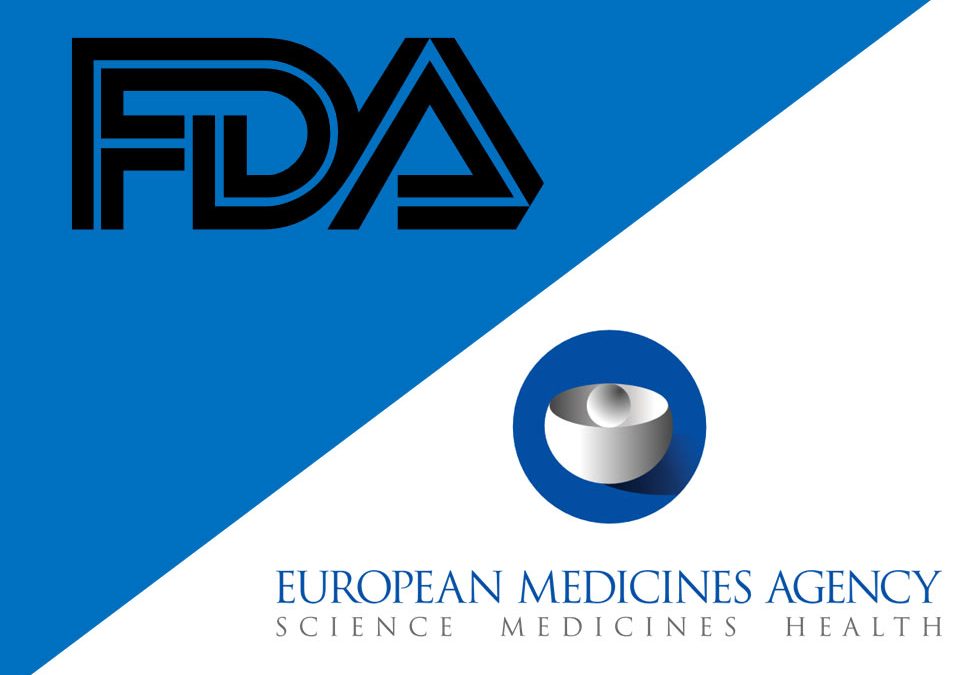Advanced Therapy Medicinal Products (ATMPs), represent a fast-growing group of innovative biological medications, with stunning potential for the treatment of several different pathologies.
However, in most cases, the development of ATMPs required extensive and complex clinical investigations. These efforts and due not only to the astonishing scientific and technical difficulties but also to regulatory ones, as demonstrated by the great delay between the speculative concept of ATMPs and first approved products. In fact, the first ATMP product in EU was approved only in 2009, (US in 2010)1, while theoretical ATMPs applications were published decades before. To correctly characterize advanced products, both EMA (for EU) and FDA (for US) have established their specific committee for ATMPs, which are the Committee for Advanced Therapies (CAT) and Centre for Biologics Evaluation and Research (CBER) respectively. In the following article, we will give two examples of regulatory difficulties, commonly faced by ATMPs producers.
The first example regards the legal definition of ATMPs, which can be somehow misleading. EU regulations clearly distinguish between cell-based products considered as ATMPs and cell-based therapies not considered as medicinal products (i.e., blood system of transplant). Importantly, the legal classification in this second category imposes to not commercialize or manufacture on an industrial scale for ethical and legal reasons (Regulation 1394/2007/EC). Moreover, ATMPs are not only regulated under the guidelines of medicinal products but also of medical devices. In US advanced therapies are regulated in a similar, but not equal, manner. In legislative terms, biological products are divided into five different categories, where the fifth regulates cellular and gene therapy products. As for the EU classification, the legal definition is fundamental and sometimes misleading. Advanced therapies should not be confused with another legislative category of products called “human cells, tissues, and cellular and tissue-based products” (HCT/Ps), that are not considered as biological products.
The second significant example regards the environments of ATMPs manufacturing. Good Manufacturing Practices (GMP) and highly sterile environments are obviously fundamental for cell and gene therapy production. Both European and American GMP standards require that these drugs must be produced in Grade A environments, which means that number of airborne particles smaller than 0.5 micrometers should not exceed 3,520 per m3. However, the sterility grade of the surrounding laboratory is Grade B for EU standards and Grade C for US. This apparently small difference involves a large disparity in the costs and complexity of the production workshops. In fact, Grade B requires a higher number of air changes in the room, continuous particle and microbiological control, an operator dressing in special sterile overalls, a greater pressure gradient, and so forth. Considering these, appear evident that the physical separation between product and operator can allow a greater degree of safety for both the drug and the operator. On this specific topic the Eudralex, the collection of rules and regulations governing medicinal products in the European Union, states: “Isolators are beneficial in assuring the required conditions and minimizing the microbial contamination associated with direct human interventions in the critical zone. Their use should be considered in the CCS. Any alternative approaches to the use of […] Isolators should be justified”. Thus, the use of closed system appears more appropriate than a classical open system under at least under the regulatory profile.
Cell and gene therapies cannot be extensively sterilized as commonly used drugs, and thus a clear and severe regulation is necessary to ensure safety for both the patients and the operators. Nevertheless, with these two short but significant examples we clearly highlighted that for a rapidly expanding field as ATMPs are, regulatory misleading could cause enormous bottlenecks in both the manufacturing production and in the development of new therapies, and for this reason, more effort should be accomplished among the various regulatory departments to standardize rules and definitions.
Recent Articles
- Cell therapy based on neuronal precursors for the treatment of multiple sclerosis 10 January 2023
- How to Improve the Sustainability of Advanced Therapies: The Case of Strimvelis 24 November 2022
- FDA reorganization: a “Super Office” to manage the increasing cell and gene therapy workload 3 November 2022
- GMP Cleanliness Classifications: Deciphering the Differences and Requirements among Grades 12 September 2022
- How to Overcome the Most Common Issues in the GMP-Compliant Culturing of Mesenchymal Stem Cells: Isolation and Automatization 30 August 2022

